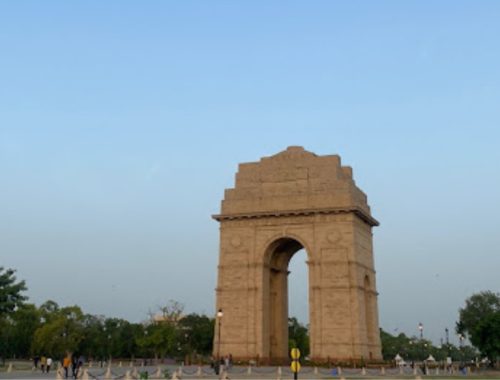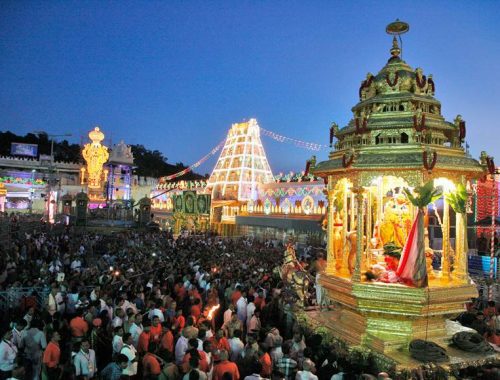
Destination Development: Key Strategies for Making India a Global Tourism Hub
India is a country brimming with the potential to become a global tourism hub. With our rich cultural heritage, diverse landscapes, and historical significance, we have so much to offer to international travelers. The tourism arena in India has been growing steadily, with more people realizing the beauty of places like the Taj Mahal, Kerala’s backwaters, and the vibrant city life at places like Mumbai and Delhi. However, for India to truly position itself as a top global tourism destination, it needs to focus on developing its lesser-known destinations and enhancing its infrastructure.
Destination development plays a crucial role in making India stand out on the global tourism map. As we are already promoting popular spots, we should also start giving attention to hidden gems. By offering travelers a more eclectic experience, India can attract visitors from across the world. In this blog, we will cover some of the key strategies that can put our tourism on the top of everyone’s bucket list worldwide. Keep reading!
Identifying and Developing Unique Destinations
Key Points
- Promoting Lesser-Known Spots: Beyond popular attractions, promoting lesser-known destinations can diversify the travel experience. It can also reduce overcrowding in famous areas.
- Cultural Diversity: We can market India’s cultural and geographical diversity, from Rishikesh’s spiritual tourism to the eco-friendly tourism in the Northeast, as unique experiences.
- Role of Infrastructure: Adequate infrastructure, such as roads, hotels, and connectivity, is essential for making these destinations accessible and tourist-friendly.
Comparison of Popular and Unique Destinations:
| Popular Destination | Unique Destination | Tourism Focus | Current Infrastructure |
| Goa | Northeast India | Beach and nightlife tourism | Well-established |
| Taj Mahal (Agra) | Rishikesh | Historical tourism | Basic, growing rapidly |
| Jaipur | Hampi | Cultural heritage | Moderate, needs improvement |
| Kerala | Spiti Valley | Eco-tourism and wellness | Developing, needs better access |
Also Read: Top 12 Archaeological Sites to Visit in India
Development Strategies by Destination Type
| Destination Type | Focus Area | Key Strategies |
| Spiritual Tourism | Rishikesh, Varanasi | Promote wellness retreats, yoga camps, and spiritual festivals |
| Eco-Tourism | Northeast India, Kerala Backwaters | Develop eco-friendly lodging, promote sustainable travel |
| Adventure Tourism | Leh-Ladakh, Uttarakhand | Improve road infrastructure, set up adventure camps |
| Cultural Tourism | Hampi, Khajuraho | Improve connectivity, market heritage walks and festivals |
Sustainable Tourism Development: A Way to Long-Term Tourism Success for India
Tourism is one of the largest and fastest-growing industries in the world, but its environmental and cultural impact is increasingly under the spotlight. Sustainable tourism development offers a way to grow the sector while preserving the environment and culture. Let’s see why sustainability is essential for long-term success and how technology and infrastructure can support this shift.
Why Sustainability is Key to Long-Term Tourism Success
Sustainability ensures that tourism doesn’t harm the environment, deplete resources, or negatively affect local cultures. By integrating eco-friendly practices, we can protect natural and cultural assets for future generations while still offering an attractive experience for tourists.
Key elements of sustainable tourism:
- Conserving natural resources: Reducing water and energy use.
- Reducing pollution: Limiting waste and carbon emissions.
- Cultural preservation: Respecting and promoting local traditions and heritage.
Promoting Eco-Friendly Practices
Eco-friendly practices are central to sustainable tourism development. They help preserve the environment while creating unique experiences for tourists.
- Energy-efficient hotels: Solar panels, energy-saving lighting, and water recycling can minimize a hotel’s environmental footprint.
- Green transportation: Promoting the use of bicycles, electric vehicles, and public transport.
- Waste management: Implementing waste segregation, recycling programs, and limiting single-use plastics.
| Eco-Friendly Practices | Benefits |
| Solar-powered accommodations | Reduced energy use |
| Recycling programs | Less waste generation |
| Electric vehicle rentals | Lower emissions |
Protecting Cultural Heritage
Cultural heritage is a valuable resource, especially in a country like India, which is known for its history and diversity. Sustainable tourism focuses on the following:
- Promoting local festivals, crafts, and traditions.
- Supporting community-based tourism where locals benefit directly from tourism activities.
Making India a Global Tourism Hub with Responsible Tourism and Community Engagement
Responsible tourism means tourists, companies, and governments take accountability for their actions. By engaging local communities in decision-making, tourism becomes an inclusive growth engine. Local people become protectors of their environment and culture, contributing to sustainable economic growth.
Green Certifications for Sustainable Tourism
Green certifications are a way to recognize and promote eco-friendly businesses and destinations. Examples include:
- LEED certification for buildings that meet environmental standards.
- Green Globe certification for hotels and tourism operators focused on sustainability.
Case Study of Kerala – ‘God’s Own Country’
Kerala’s tourism strategy is a great example of how sustainability and tourism can work hand in hand. Popular as ‘God’s Own Country,’ Kerala is a pioneer in eco-friendly tourism. The state promotes responsible tourism through:
- Backwater houseboats that reduce water pollution.
- Homestays that support local communities.
- Ecotourism villages where visitors can experience Kerala’s natural beauty while contributing to the local economy.
Technology Integration for Enhancing Tourist Experiences
Technology is transforming tourism by enhancing the visitor experience while also supporting sustainability. From smart cities to virtual tours, digital transformation is helping destinations become more tourist-friendly and eco-conscious.
Role of Digital Transformation in Tourism
Smart cities use technology to improve services like transportation and waste management. It makes cities more liveable and sustainable for both residents and tourists.
- Digital guides: Interactive apps and QR codes provide real-time information, reducing the need for printed materials.
- Virtual tours: These offer tourists a chance to explore destinations without physical travel, reducing the carbon footprint.
Importance of a Strong Online Presence
Tourism destinations need strong online visibility. A simple yet well-designed website and active social media presence help attract visitors and provide them with all the information they need for a better experience.
| Technology | Impact on Tourism |
| AI for tailored experiences | Customized recommendations improve satisfaction |
| Chatbots for assistance | 24/7 tourist support via instant responses |
| AR/VR for immersive experiences | Enhanced visitor engagement and exploration |
Smart Destination Management with IoT and Data Analytics
The Internet of Things (IoT) and data analytics are in use to manage tourist flows, ensuring attractions don’t become overcrowded. This reduces wear and tear on infrastructure and protects fragile environments.
Building World-Class Infrastructure: Destination Development: Key Strategies for Making India a Global Tourism Hub
For a destination to become a global hub, it must have world-class infrastructure. This includes efficient transportation systems, luxury hotels, and top-notch tourist facilities.
Modern Transportation Systems
Tourists expect convenience. Destinations with good air, rail, and road connections attract more visitors.
- Airports: Expanding international connectivity and providing smooth airport experiences.
- Rail networks: High-speed trains linking major cities with tourist destinations.
- Roads: Better roads to remote tourist spots improve access and promote sustainable travel.
High-Quality Hospitality Services
Tourists, especially international travelers, look for comfort and luxury. By upgrading hotels, resorts, and service standards, destinations can cater to global tourists. A strong hospitality sector also creates jobs and ensures a positive experience for tourists.
Examples of Globally Recognized Tourism Hubs
Popular tourism hubs like Dubai and Singapore have set a high standard for infrastructure, combining luxury with sustainability. These cities:
- Provide amazing connectivity.
- Offer world-class accommodation and services.
- Lead in using technology for tourism management.
Marketing India as a Global Brand
When it comes to tourism, a scattered approach just won’t cut it. A unified global marketing campaign ensures that India’s message is clear and consistent. It highlights the country’s unique experiences and shows the world why it should be on every traveler’s list.
- Consistency Builds Trust: Tourists are more likely to visit when they know what to expect, and a unified message across different platforms helps build that trust.
- Stronger Brand Image: India has everything from beautiful landscapes to a rich cultural heritage. A focused marketing strategy brings these experiences together under one brand. This makes it easier for people to see India as a top tourist destination.
| Benefits of a Unified Campaign |
| Builds a consistent global image |
| Makes India a recognizable brand |
| Attracts tourists from diverse regions |
Incredible India 2.0: A Step in the Right Direction
The “Incredible India 2.0” campaign is a great start. It’s focused on digital platforms, which is where travelers are these days. Social media, video content, and storytelling are at the heart of this campaign, making it more relatable to younger audiences.
- Digital First: The campaign uses digital tools to engage with people on social media platforms, sharing captivating videos and stories about India’s attractions.
- Market-Specific Strategies: It also targets different markets like the USA, Europe, and Southeast Asia with tailored campaigns that appeal to their unique preferences.
| Target Markets for Indian Tourism |
| USA |
| Europe |
| Southeast Asia |
But we can’t stop there. To really make a mark, India needs to go beyond traditional campaigns. We need to focus more on digital engagement, personalization, and experience-driven marketing.
The Power of Social Media Influencers and Travel Bloggers
Social media is a real game-changer today. People trust what they see online, and that’s where influencers, travel bloggers, and brand ambassadors come into play.
- Influencers Reach the Right Audience: By partnering with travel influencers, India can target specific demographics who are actively looking for new travel destinations.
- Bloggers Bring Stories to Life: Travel bloggers offer detailed reviews and personal experiences, which can be powerful in convincing people to visit India. They bring authenticity to the table, which traditional ads often lack.
- Brand Ambassadors Build Credibility: Well-known celebrities or public figures can help enhance India’s global image, making it more appealing to international tourists.
| Why Social Media Influencers Matter |
| Reach specific audiences |
| Offer authentic travel experiences |
| Create cost-effective marketing |
Tapping Into Niche Tourism Markets
India’s tourism strategy should also focus on niche markets with high potential growth. These markets include wellness tourism, adventure tourism, and luxury travel.
- Wellness Tourism
- India’s yoga and Ayurveda traditions are famous worldwide, and wellness tourism is booming. By building modern wellness retreats, India can attract health-conscious tourists from around the world.
- Adventure Tourism
- India has the Himalayas for trekking, the Thar Desert for safaris, and the Andaman Islands for scuba diving. Adventure tourism is another key area where India can shine.
- Luxury Travel
- India’s heritage hotels, luxury trains, and palaces offer unique experiences for high-end travelers. By promoting these destinations, India can attract luxury travelers who are looking for something exceptional.
Public-Private Partnerships (PPP)
One of the biggest opportunities for growth in Indian tourism lies in Public-Private Partnerships (PPP). These partnerships can bring in much-needed investment and expertise to develop tourist infrastructure and services.
- Encouraging Private Investment: The government can offer incentives like tax breaks and subsidies to encourage private companies to invest in hotels, resorts, transportation, and eco-friendly tourism projects.
- Joint Ventures for Growth: Public-private collaborations can help build new attractions, improve services, and promote sustainable tourism practices. This boosts tourism and creates jobs and economic growth.
Thailand, for example, has successfully used PPP models to develop its tourism industry. India can replicate this by encouraging government and private sector collaboration.
Takeaway
To make India a top global tourism destination, we need to focus on a few key strategies to make India a top global tourism destination. It is about more than just promoting the usual tourist spots. Today, it should highlight lesser-known destinations showing India’s rich culture and natural beauty. Sustainability should be at the core, ensuring that our environment and heritage remain protected. Developing modern infrastructure is crucial, as is offering authentic experiences that connect travelers with India’s diverse traditions. And finally, we need a strong global marketing push to make India stand out on the world stage.
The path forward requires collaboration. The government, private sector, and local communities all need to work together to create a thriving tourism ecosystem. It’s time to put these strategies into action. For India to truly shine as a global tourism hub, everyone involved—investors, local businesses, international partners—must play a part. The potential is there, and with the right approach, India can become a leading name in global tourism.
FAQs
What are the key strategies for making India a global tourism hub?
Key strategies to make India a global tourism hub include promoting unique destinations, focusing on sustainable tourism practices, using technology to enhance tourist experiences, improving infrastructure, and running strong global marketing campaigns. Collaboration between the government, private sector, and local communities is also essential.
How can sustainable tourism help India’s tourism industry?
Sustainable tourism ensures that India’s natural resources and cultural heritage are preserved while benefiting local communities. By promoting eco-friendly practices, responsible tourism, and green initiatives, India can attract environmentally conscious travelers and maintain long-term tourism growth.
Why is technology important for India’s tourism development?
Technology is crucial in making travel easier and more enjoyable for tourists. It enables seamless booking, personalized recommendations, virtual tours, and smart destination management. Incorporating technology helps India offer modern, convenient experiences for global travelers.
How can India attract more international tourists?
India can attract more international tourists by developing world-class infrastructure, promoting lesser-known destinations, and offering unique cultural experiences. Strong global marketing campaigns, partnerships with international travel platforms, and improved connectivity can also boost international tourism.
What role do local communities play in India’s tourism growth?
Local communities are essential to India’s tourism growth as they provide authentic experiences cultural insights, and help preserve heritage sites. Engaging local communities ensures that tourism benefits them directly, creating a sustainable and responsible tourism model.
Khushi Jha
I am Khushi Jha, a proud alumna of Delhi University with a degree in History and Political Science. My fascination with the events that have shaped our world drives me every day. Currently, I am pursuing my Master’s in History, diving even deeper into global dynamics and the incredible heritage of India. I firmly believe that India's rich heritage deserves wider recognition. I strive to bring its stories to the forefront, ensuring they are celebrated and acknowledged on a global stage. I have written extensively across various niches, including fashion, health, lifestyle, real estate, hospitality, amongst others. In my free time, you’ll find me immersed in books, both fiction and non-fiction, or simply enjoying some much-needed rest.
You May Also Like

All You Need to Know About India Gate, Delhi
July 30, 2025
Meet Lord Narsimha: What the Movie Didn’t Tell You (and Where to See the Real Sculptures)
August 16, 2025


